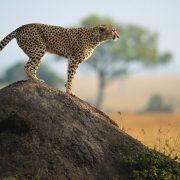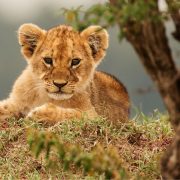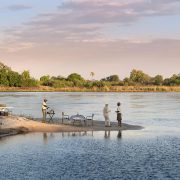Namibia, with its vast deserts, rugged mountains, and unique wildlife, is a dream destination for many travelers.
Among its numerous attractions, the Caprivi Strip stands out as a paradise for birdwatchers, nature enthusiasts, and safari seekers. This narrow stretch of land, now known as the Zambezi Region, offers an unparalleled blend of scenic beauty, wildlife, and cultural richness. If you’re planning a trip to Namibia, here’s why the Caprivi Strip should be at the top of your itinerary.

What is the Caprivi Strip?
The Caprivi Strip, named after German Chancellor Leo von Caprivi, is a narrow protrusion of Namibia that extends eastwards, bordered by Angola, Botswana, and Zambia. This unique geographical feature was created during the colonial era as part of a treaty between Germany and the United Kingdom. It provided the Germans access to the Zambezi River, facilitating their quest for a trade route to the east coast of Africa. Today, the region is known as the Zambezi Region, a name that reflects its rich natural heritage and the mighty river that defines it.

Towns and Ethnic Groups in the Caprivi Strip
The Caprivi Strip, or Zambezi Region, is home to several towns, including Katima Mulilo, the regional capital, as well as Kongola, Bukalo, and Ngoma. These towns serve as gateways to the region’s stunning natural attractions. The area is culturally diverse, with various ethnic groups such as the Masubia and Mafwe, each contributing to the vibrant cultural tapestry of the region.

Birdwatching Hotspots
For birdwatchers, the Caprivi Strip is nothing short of heaven. The region’s wetlands, rivers, and floodplains attract over 450 bird species, making it one of the top birding destinations in Africa. Key birdwatching hotspots include the Bwabwata National Park, Mudumu National Park, and Nkasa Rupara National Park.
- Bwabwata National Park: This park is a must-visit for bird enthusiasts, offering sightings of rare species like the Pel’s fishing owl, African skimmer, and Wattled crane.
- Mudumu National Park: Known for its lush riverine forests and floodplains, Mudumu is perfect for spotting species such as the African fish eagle and the Malachite kingfisher.
- Nkasa Rupara National Park: The wetlands of Nkasa Rupara provide excellent opportunities to see the African pygmy goose, Slaty egret, and the elusive Lesser jacana.

Safari Destinations and Resorts
While the Caprivi Strip is renowned for its birdwatching, Namibia offers an array of safari lodges and resorts beyond this region, each providing unique experiences and luxurious accommodations. Here are some of the top safari lodges in Namibia that should be on your radar.
Shipwreck Lodge – Skeleton Coast: While not in the Caprivi, this lodge is worth mentioning for its unique design inspired by shipwrecks along the Skeleton Coast. It’s an ideal base for exploring the dramatic coastal landscapes and spotting desert-adapted wildlife.
Little Kulala – Sossusvlei: Located near the iconic Sossusvlei dunes, Little Kulala offers stunning views of the Namib Desert. Guests can enjoy guided drives, nature walks, and hot air balloon rides over the dunes.

Little Ongava – Etosha National Park: This exclusive lodge offers intimate safari experiences in one of Namibia’s premier wildlife parks. Guests can look forward to luxurious accommodations and exceptional game viewing, including the chance to see the Big Five.
Wolwedans Dunes Lodge – NamibRand Nature Reserve: Set in the vast NamibRand Nature Reserve, this lodge offers panoramic views of the desert landscape. Activities include scenic drives, hot air ballooning, and guided walks in one of the most tranquil settings imaginable.
Damaraland Camp – Damaraland: Known for its dramatic landscapes and ancient rock art, Damaraland Camp offers a unique cultural and wildlife experience. Visitors can track desert-adapted elephants and explore the region’s geological wonders.

Practical Tips for Visiting the Caprivi Strip
Visiting the Caprivi Strip requires some planning to ensure a smooth and enjoyable trip. Here are a few practical tips to help you prepare:
Best Time to Visit: The best time to visit the Caprivi Strip is during the dry season, from June to October. During this period, wildlife congregates around water sources, making for excellent game viewing. The weather is also more predictable, with cooler temperatures and less rainfall.
Travel Arrangements: The nearest airport to the Caprivi Strip is Hosea Kutako International Airport in Windhoek, Namibia’s capital. Regular flights connect Katima Mulilo Airport, located about 18 kilometers from Katima Mulilo town to Windhoek. This is the easiest way to reach the main town of the Caprivi Strip. Renting a 4×4 vehicle is recommended for exploring the region, as some areas may have challenging road conditions.
Health and Safety: Ensure you are up to date with vaccinations and take precautions against malaria, which is prevalent in the region. Carry insect repellent, wear long sleeves and pants in the evenings, and sleep under mosquito nets where provided.
Local Etiquette: Respect the local customs and traditions of the ethnic groups in the Caprivi Strip. Greet people politely, ask for permission before taking photographs of individuals, and support local businesses and crafts.

Namibia‘s Caprivi Strip, or the Zambezi Region, is a must-visit on any Namibian adventure. From the birdwatching hotspots of Bwabwata and Mudumu National Parks to the luxurious lodges scattered throughout the country, there’s no shortage of incredible places to stay and explore. Chat with us about how we can help make your Caprivi Strip trip a reality. Then get ready to pack your binoculars, grab your camera, and discover the wonders of Namibia’s Caprivi Strip.













